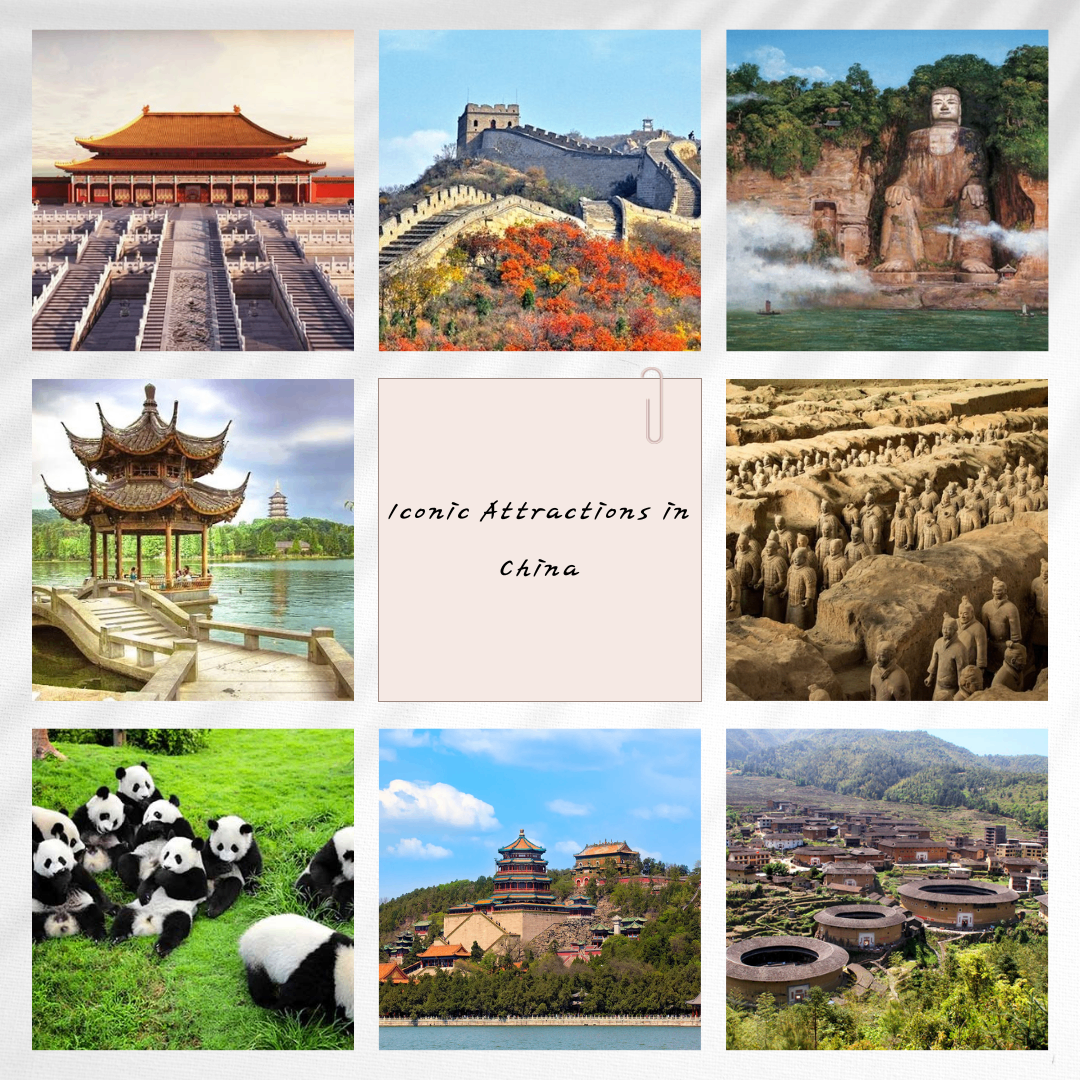



 ${ lang === 'zh' ? '中文': 'ENG' }
${ lang === 'zh' ? '中文': 'ENG' }




 ${ lang === 'zh' ? '中文': 'ENG' }
${ lang === 'zh' ? '中文': 'ENG' }
 ${formatTime('2025-03-05 17:46:26', 2)} ${formatTime('2025-03-05 17:46:26', 3)}, ${formatTime('2025-03-05 17:46:26', 1)}
${formatTime('2025-03-05 17:46:26', 2)} ${formatTime('2025-03-05 17:46:26', 3)}, ${formatTime('2025-03-05 17:46:26', 1)}

Discover Mainland China’s Rich Heritage
Mainland China is home to over 50 UNESCO World Heritage sites, each offering a unique glimpse into the country's rich history and breathtaking landscapes. From ancient temples steeped in history to hidden gems waiting to be explored, we’ve compiled a list of must-visit destinations that promise unforgettable adventures.
1. The Great Wall of China, Beijing
A symbol of China’s incredible history, the Great Wall stretches across vast landscapes from the eastern coastline to the Gobi Desert. This Ming dynasty marvel stands as a testament to the country’s past. Some of the best-preserved sections, such as Badaling, are easily accessible from downtown Beijing, making it a convenient day trip for travelers.
How to get there: Fly directly to Beijing, then take the Airport Express downtown. From there, transfer to Beijing North Station and head to Badaling. Alternatively, opt for a private car to explore lesser-visited sections.
2. Forbidden City, Beijing
Situated in the heart of Beijing, the Forbidden City is the world’s largest preserved palace complex. Once home to Chinese emperors, this architectural masterpiece features over 9,000 rooms spread across hundreds of buildings. Today, it houses a museum that showcases a vast collection of historical artifacts.
How to get there: Fly to Beijing and take the Airport Express to the city center. From there, use the metro and exit at Tian’anmen East Station.
3. Summer Palace, Beijing
Nestled in northwest Beijing, the Summer Palace is a stunning example of traditional Chinese garden design. Originally built in 1750, this imperial retreat is surrounded by serene lakes, pavilions, and lush greenery, offering a tranquil escape from the bustling city.
How to get there: After arriving in Beijing, take the Airport Express downtown, then transfer to the metro and get off at Beigongmen Station.
4. West Lake, Hangzhou
A source of inspiration for ancient poets and artists, West Lake in Hangzhou remains a favorite destination for visitors. Encircled by picturesque pagodas, temples, and a scenic 15-kilometer walking path, it is a must-visit for nature lovers and history enthusiasts.
How to get there: Fly directly to Hangzhou and take the metro to the lake’s northeast corner or take a taxi to visit well-known spots like the Broken Bridge and Bai Causeway.
5. Suzhou – The Venice of the East
Dubbed the “Venice of the East” by Marco Polo, Suzhou is famous for its classical Chinese gardens. Once home to around 200 private gardens, over 50 remain today, with nine designated as UNESCO sites. A visit to the Humble Administrator’s Garden provides a glimpse into 2,000 years of exquisite landscape design.
How to get there: Fly to Shanghai, then take a 30-minute high-speed train to Suzhou, followed by a short taxi ride to the gardens.
6. Sichuan Giant Panda Sanctuaries
Comprising seven nature reserves and nine parks, Sichuan’s Giant Panda Sanctuaries offer a rare opportunity to observe pandas in their natural habitat. This sanctuary also protects other endangered species like the red panda and the snow leopard.
How to get there: Fly to Chengdu and take the metro to Panda Avenue Station, followed by Bus 408 to the Chengdu Panda Base.
7. Leshan Giant Buddha, Sichuan
Standing at an impressive 71 meters, the Leshan Giant Buddha is the largest stone Buddha in the world. Visitors can appreciate its grandeur from a boat tour or take a closer look by climbing up the intricately carved rock face.
How to get there: Fly to Chengdu, then take a high-speed train to Leshan (approximately 40 minutes). Buses and trains from downtown Chengdu also provide easy access.
8. The Terracotta Army, Xi’an
Discovered in 1974 by local farmers, the Terracotta Army is one of China’s most significant archaeological findings. The site houses thousands of life-sized clay soldiers, horses, and chariots, guarding the tomb of China’s first emperor, Qin Shi Huang.
How to get there: Fly to Xi’an, then take a 70-minute taxi ride or use a shuttle bus from Fanzhicheng Bus Station.
9. Pingyao Ancient City
A well-preserved relic from the Ming and Qing dynasties, Pingyao was once China’s financial center. Visitors can walk along the city’s ancient walls and explore nearby historical landmarks like Shuanglin Temple.
How to get there: Fly to either Beijing or Xi’an, then take a high-speed train to Pingyao (approximately three to four hours).
10. Fujian Tulou, Xiamen
Located in Fujian’s countryside, the tulou are massive circular earthen buildings that once served as fortified communal homes for Hakka families. These structures, some of which housed up to 800 residents, offer a fascinating insight into Hakka culture and traditions.
How to get there: Fly to Xiamen, then take a three-hour private car ride or long-distance bus to the tulou villages.
Plan Your Adventure Today!
Experience the beauty, history, and culture of Mainland China by visiting these incredible UNESCO sites and attractions. Book your journey now and embark on an unforgettable adventure!